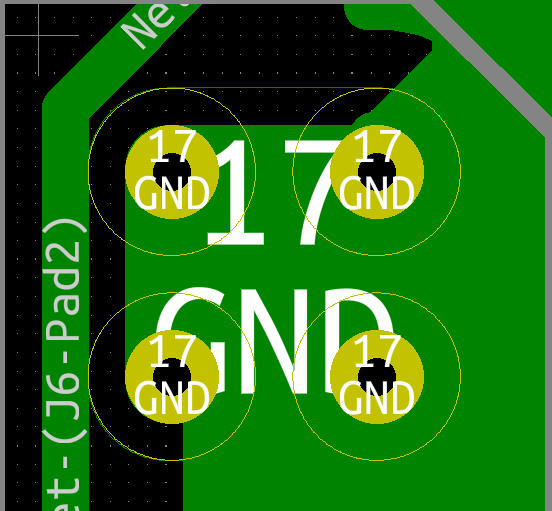I am going to be ordering this board from JLCPCB which has some 0.2 mm hole diameter thermal vias on a QFN pad, and it says on their capabilities page that the smallest via hole size is 0.3 mm, BUT smallest drill hole size is 0.2 mm (2 layer board rules). It's a 2 layer board, they're actually not vias, they are pads which connect from front copper layer to bottom ground layer, I'm using the footprint from standard KiCad library "QFN-16-1EP_3x3mm_P0.5mm_EP1.75x1.75mm_ThermalVias". Do you think the board house will accept this? Or should I just make the hole diameter 0.3 mm? But if I do that will they be too large and will too much solder leak down through during reflow? I'll be soldering by hand with a heat gun, not an oven. Thanks for any advice.
--------------------------------------
UPDATE:
Here's the email response from JLCPCB:
"Thank you for your email. So sorry to tell you that we don't make via in pad. We make plated through via.(See pictures) Also,i find an instruction about our company. Instructions for ordering Hope this will help you. Thank you.
(END EMAIL)
So to me that sounds like they will make the vias in the pads but won't fill them with non-conductive material, which is all I wanted to do anyway. Although she didn't say specifically that they could do the bare via in the pad, which leaves me still a bit uncertain. I don't see why they couldn't though, just like a via anywhere else.
Also, I found this TI application note that recommends thermal pad vias be 0.3 mm or smaller, so should be good with the size.




